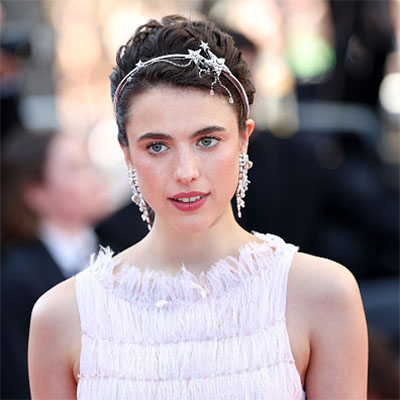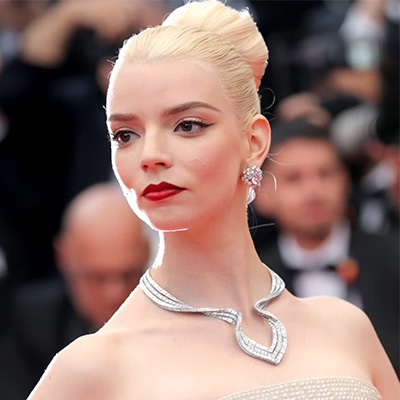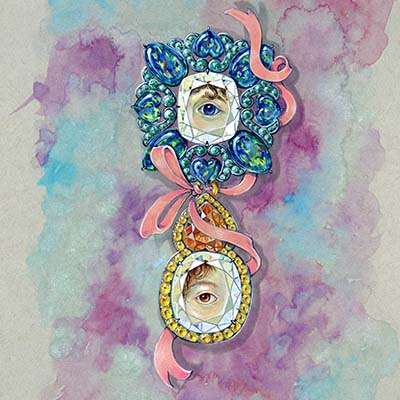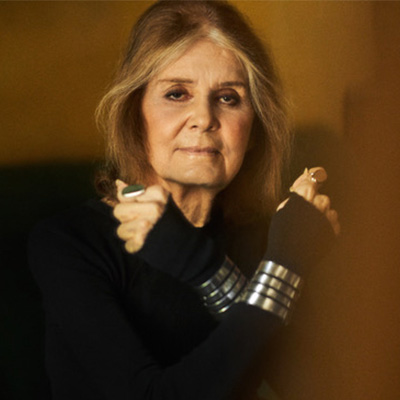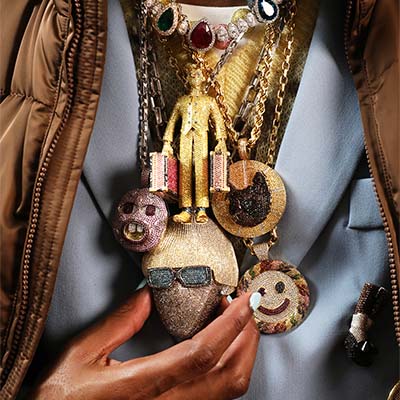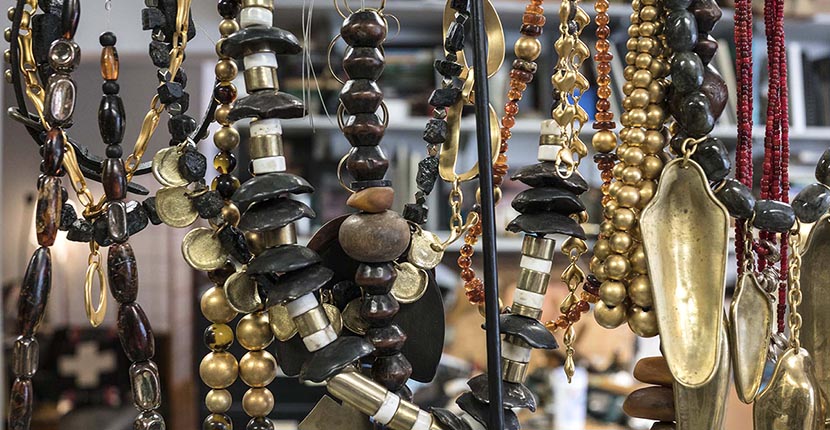
A detail of Robert Lee Morris jewelry at the designer's studio Photo by Sally Davies
Profiles
The Eternal Style of Robert Lee Morris
The iconoclast designer has been making bold creations for almost 50-years
On October 18, 2016 at the 92nd Street Y in New York City, Robert Lee Morris will sit down with The Adventurine’s Marion Fasel for a sold out appearance in the venue’s popular Conversation series. This article highlights the topics that will be reviewed. If you are interested in joining the waiting list for the event add your name here.
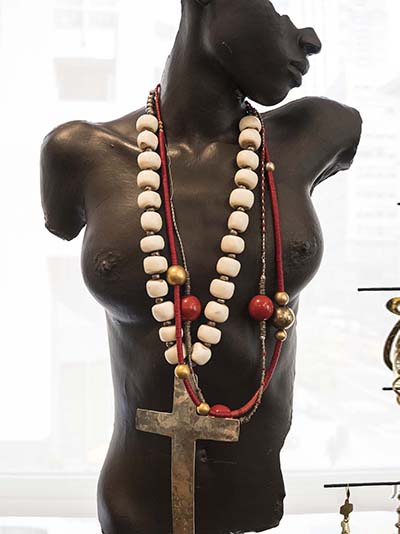
The plaster casts Robert Lee Morris has used for display since he opened Artwear in 1977. Photo by Sally Davies
When Robert Lee Morris opened Artwear in 1977, the store instantly became a part of the happening New York City scene. His jewelry and the work of like-minded designers was shown on sexy plaster casts of male and female torsos described by The New York Times as “startling.” It was the year Saturday Night Fever premiered in movie theaters. The four-on-the-floor rhythm of the disco soundtrack pumped through the stereo system and onto the sidewalk to lure customers into the party atmosphere. “The energy of the jewelry matched the energy of the clubs,” remembers Morris.
Artwear originally opened on the Upper East Side around the corner from the Whitney Museum and across the street from a location where Andy Warhol had plans for a restaurant called Andymat, designed in the mode of an Automat but each table was going to have a television people could watch while eating alone. From the moment Artwear opened, the shop received extensive attention from the press and steady sales to luminaries like Gianni Agnelli, who bought Robert’s golden eye masks and long, golden finger talons to wear at Studio 54. Despite the nice sales, the designer could not keep up with the exorbitant rent. (High rents also prevented Warhol from opening his concept restaurant.)
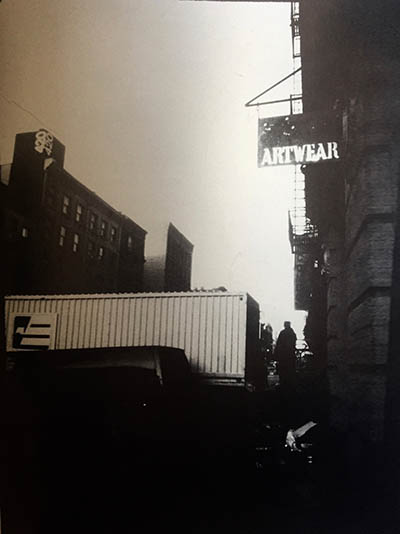
Artwear advertisement from 1979 showing the Soho location among the loading docks in the neighborhood. Photo courtesy of the Robert Lee Morris Archives
“After six months I got out of my lease and moved Artwear to Soho,” explains Morris. There was very little in terms of retail in the neighborhood at the time. It was mainly loading docks and factories, a fact Robert showed off in a 1979 advertisement with the Artwear sign hanging above a truck and worker unloading a haul. The designer chose the location because he lived nearby in a loft space at the corner of Crosby and Howard Street. He also appreciated the art gallery community building up in the neighborhood. “In Soho we attracted a huge audience of shoppers—big crowds came to openings,” Robert explains. “We were the hottest store in New York for over a decade.”
The concept of Artwear, an enterprise of creative people Robert put together for the store, was a natural evolution for the designer’s hippie past. After graduating from Beloit College in Wisconsin in 1969, he formed a craft commune, Big Ted’s Farm, with some college friends. “Everyone on the farm made something different—pottery, sweaters, macramé,” says Morris. “I decided to make jewelry. I got a book called How to Make Jewelry by Thomas Gentile, which was easy to follow with lots of pictures. I said to myself, I need a hammer and some wire, and I built a workshop in a tool shed. I would listen to Led Zeppelin’s first album and worked until two or three o’clock in the morning in total ecstasy.”
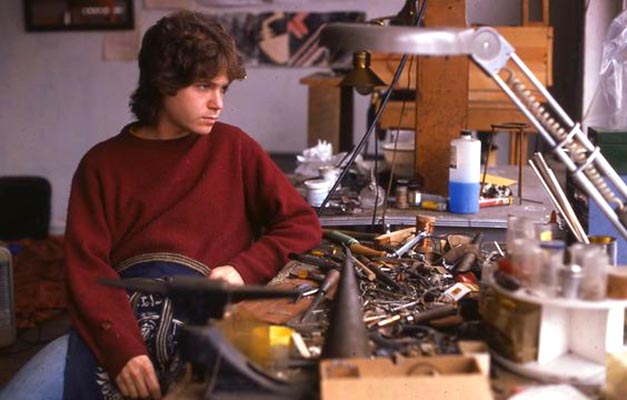
Robert Lee Morris at his workbench in the early 1970s. Photo courtesy of the Robert Lee Morris Archives
After a fire burned down the farm, Morris sold his jewelry at craft fairs in Vermont. In 1971, at one of these inauspicious events, he was discovered by gallerist Joan Sonnabend. “She was unlike anyone I had ever seen, very stylish,” says Robert. “She saw my jewelry and said ‘I am going to make you a star.’” Sonnabend bought his bold silver jewels for her Sculpture to Wear boutique in New York City’s Plaza Hotel that featured jewelry by artists including Pablo Picasso, Louise Nevelson and Man Ray. Robert’s work caused a sensation, as Sonnabend predicted it would. In 1974, Robert moved to New York. Two years later his Gladiator Bauble Collar was on the cover of Vogue. Unfortunately, Sculpture to Wear lost its lease at the Plaza Hotel and closed forcing Robert to search for a new retail outlet.
Robert went to the illustrious art dealer Leo Castelli inspired by the art connection of the jewelry at Sculpture to Wear. Castelli asked, “What am I going to do with it?” Buyers at department stores Bergdorf Goodman and Bendels could not figure out where to place it on the sales floor because the jewelry was a modern mix of costume and fine jewelry details. The gap in the marketplace for artistic accessories of this kind and the plight of other adventurous jewelers, inspired Morris to establish Artwear.
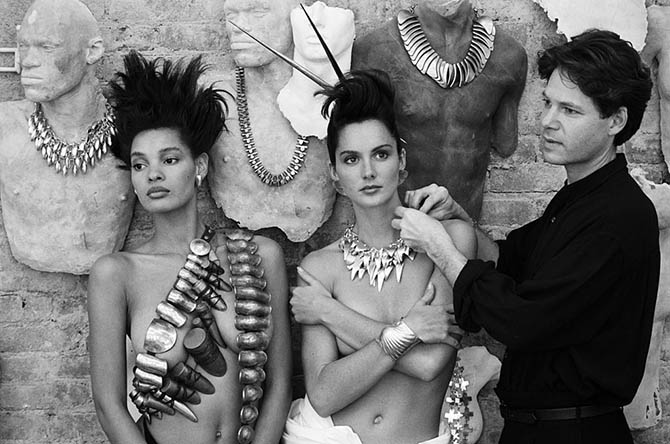
Robert Lee Morris with models in his jewelry at Artwear in 1987. Photo Susan Wood/Getty Images
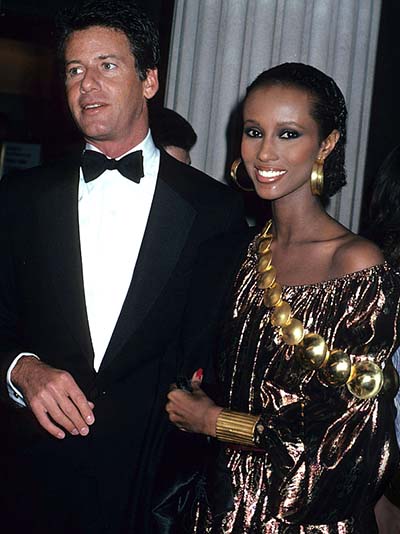
Calvin Klein at the MET Gala with Iman who is wearing the Robert Lee Morris jewelry seen on the fashion designer’s runway in 1981 Photo by Rose Hartman/WireImage
Once Artwear opened downtown, Robert staged jewelry shows like art exhibitions for designers represented in the boutique including Ted Muehling, Cara Croninger and Patricia Von Musulin among several others. He also held open calls for new designers to come show their work every Sunday in an effort to find fresh talent and help out the jewelry community. “People would line up down the block,” says Robert. “I was always surprised at how many people would show up. I would give them a critique of their work and would pull some into the store or I would even call editors if I felt their work was right for a certain publication.”
Ever since Robert appeared on his first Vogue cover in 1976, he had close bonds with fashion editors who loved featuring his designs. Robert’s relationship with fashion began to expand in 1979 when several designers approached him about creating jewelry for their runway shows. The first designer to ask for a collaboration was Geoffrey Beene, followed Kansai Yamamoto, Anne Klein designer Louis Dell’Olio and Karl Lagerfeld. In 1981, the year Calvin Klein was the name in fashion, when he released the Brooke Shields “Nothing comes between me and my Calvins,” advertisements, Robert created all the jewelry for his epic runway show that had 72 models including Jerry Hall and Iman. No one changed. Each model just walked in one outfit. The clothes won acclaim and Robert received the Coty Award for his jewelry in the presentation.
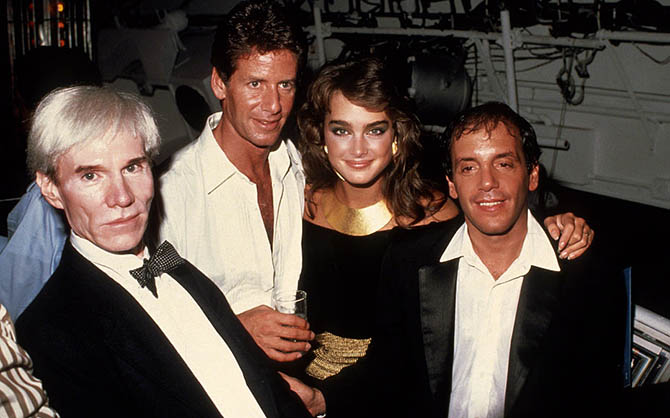
Andy Warhol, Calvin Klein, Brooke Shields wearing Robert Lee Morris jewelry and Studio 54 impresario Steve Rubell in 1981. Photo by Robin Platzer/Images/Getty Images
In 1985, Robert began his long running relationship with Donna Karan. The impact of Donna Karan’s clothing, lit up by Robert’s jewelry, was felt at her first show. Silver and gold vermeil bead necklaces, Maasai-style collars. Organically shaped big round earrings and mega cuffs went perfectly with Karan’s wide shoulders, elongated torso and cinched waist ensemble made out of wool jersey in a black palette. The first collection Robert did with Donna Karan was honored with an award for Best Accessories from the CFDA.
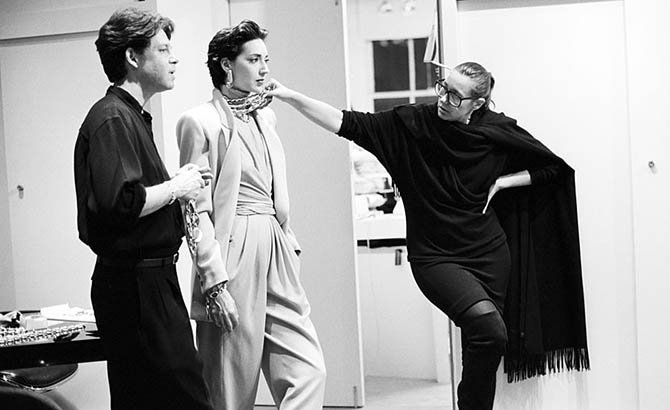
Robert Lee Morris with Donna Karan reviewing the jewelry he has created for a 1987 fashion show. Photo by Susan Wood/Getty Images
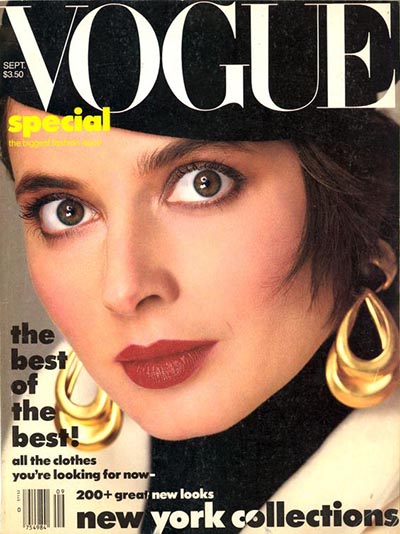
Isabella Rossellini on the September 1985 cover of Vogue wearing Robert Lee Morris earrings.
For seven years, 28 straight back-to-back collections, Robert created the jewelry for Donna Karan’s collections. In 1994, at end of the seven year run, Robert won another CFDA Best Accessories Award for his work with Donna Karan. At the ceremony, parts of which were aired on CNN, the designer electrified the audience with his acceptance speech when he proclaimed, “Fashion without jewelry is like sex without orgasm!”
Robert’s work with fashion designers influenced the speed at which he created. “If a designer wanted body cross pieces in three different metals overnight, I would do it,” remembers Robert. “With Donna there were several all-night sessions. I would work with her uptown, take a taxi downtown make some things then go back up to her studio.”
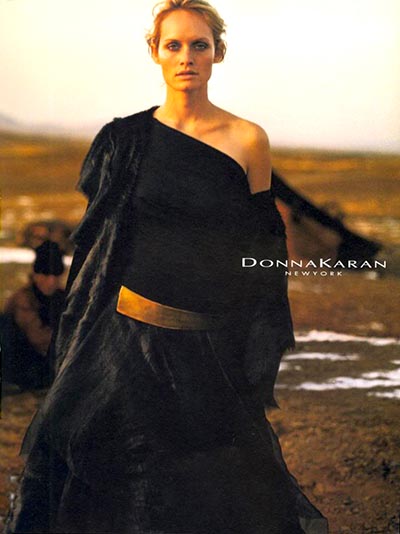
Amber Valetta in the fall 2001 Donna Karan campaign wearing a belt designed by Robert Lee Morris.
In many ways the pace of fashion prepared Robert for the next retail venture he headed into with QVC. The burgeoning television sales empire approached Robert in 1996 to be part of its Q2 upscale program. “Isabella Rossellini was on the pilot so I figured it was something I could explore,” remembers Robert. The designer’s jewelry caused a sensation. In the early days, after the Q2 channel was folded into QVC, a section of the television studio during Robert’s appearances was decorated with his jeweler’s bench where he would show how a piece was created. While the manufacturing angle is no longer part of the Robert Lee Morris program on QVC, the designer is still very much a presence on the station appearing a couple of times a month.
After taking a break from the runways in the late 1990s, Robert teamed up again with Donna Karan for a couple of sensational collections in 2001 and 2003. In this new round of the legendary collaboration, Robert’s creations were more a part of the clothing than ever before. The tribal spirit of the 2001 collection included long slung belts by Robert that were slices of metal slung around the waist. There were also leather wrap belts around jackets that were closed with large metal quill style closures made by Robert. The 2003 collection also incorporated Robert’s forms into the clothes. Open cutouts on the hip were enhanced with large circles of metal. Necklines had collar necklaces in the shapes Robert had been exploring in his work from the beginning.

The cover of Robert Lee Morris: The Power of Jewelry
While Robert’s career had been a constant flow of forward motion activity, he took some time in the early years of the twentieth century to look back at his career and publish an art book sized memoir documenting his career titled, Robert Lee Morris: The Power of Jewelry (Abrams, 2004). In addition to the professional highlights and fashion collaborations, Robert spoke about his inspiration which has truly been from the same source since the days he began designing jewelry on Big Ted’s Farm. “I have always been making a film in my imagination,” says the designer. “It was a post-apocalyptic world where women were ruling. They were Amazonian and strong and smart. I started making the jewelry for them. I have always felt like a liaison between ancient tribal civilizations and futuristic civilizations. I love tribal, heavy beads in percussionist kind of colors. I like patinas specially with the copper. All of these things have been in my mind my entire career.”
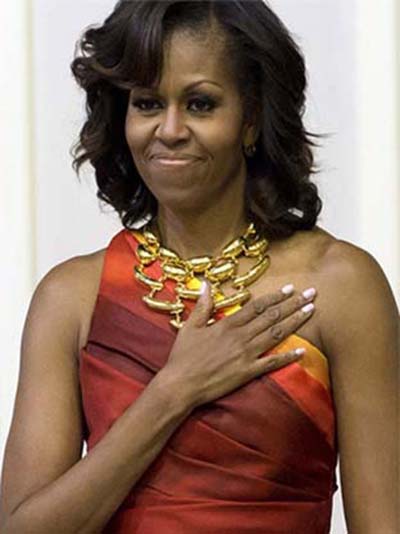
Michelle Obama wearing a Robert Lee Morris necklace in 2013.
The mood of Robert’s jewelry and his women always represented in the plaster body casts he used for displays was perfectly captured in the video the CFDA created with director Christopher Romero when the organization presented Robert with the Geoffrey Beene Lifetime Achievement Award in 2007. For the evening, all of Robert’s long-time friends and collaborators came to event including Donna Karan, Calvin Klein and Iman who was resplendent in a bib necklace from the designer.
Since writing his memoirs and winning the Lifetime Achievement Award, Robert Lee Morris has not slowed down. In 2011, he found a great production and distribution partner in Miriam Haskell Jewels that has helped expand the business. Strong women who want to make a statement with their jewelry style have continued to wear Robert’s bold collection. Hilary Clinton, Michelle Obama, Padma Lakshmi, Serena Williams and Fergie are just a few of the luminaries who have been spotted in his jewelry in recent years. A whole new generation of editors whose media is creative blogs have discovered his work as well.
As for Robert, he still feels the passion to design and make jewelry after almost 50-years working. He still is magnetically attracting to it. Robert explains, “When I get into the studio my hands go over things and the process of creation just comes over me as it always has.”
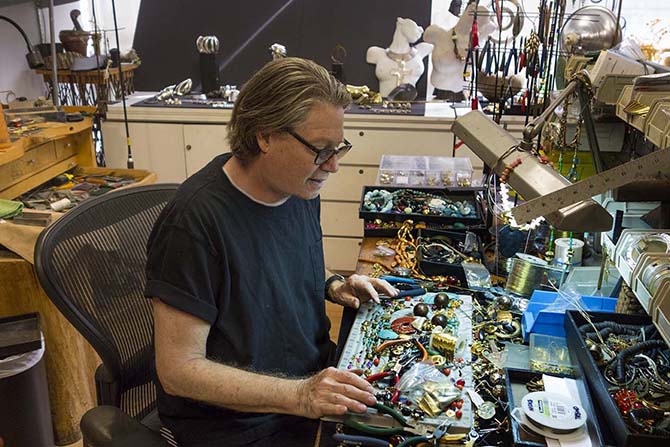
Robert Lee Morris at one of several work benches in his studio on September 27, 2016. Photo by Sally Davies
Get a gem in your mailbox SIGN UP FOR THE ADVENTURINE NEWSLETTER
